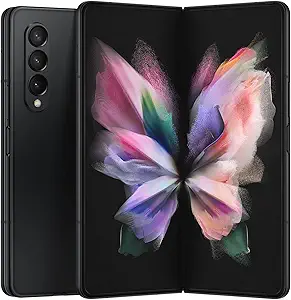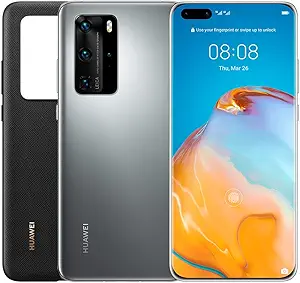In the bustling arena of smartphones, two juggernauts stand tall, each wielding its arsenal of cutting-edge technology and innovative features. Samsung, with its Galaxy series, and Huawei, renowned for its P and Mate series, offer consumers a plethora of choices, each promising a unique blend of design, performance, and functionality. As we embark on a journey to compare and contrast Samsung and Huawei smartphones, we peel back the layers to uncover the nuances that distinguish these tech titans in the fiercely competitive market.
Key Features Comparison
Product Selection
Samsung and Huawei emerge as two premier contenders in the smartphone sector, both furnishing warranties for their products, albeit with distinct terms and stipulations. Samsung mobile devices typically arrive with a standard one-year warranty, affording coverage for defects in materials or craftsmanship during ordinary usage. This warranty encompasses both components and labor expenses but does not extend to issues arising from physical trauma or water incursion. Additionally, Samsung extends options for extended warranties and mobile care plans for supplementary fees, providing safeguards against accidental damages and mechanical malfunctions. Conversely, Huawei smartphones also include a one-year warranty, complemented by an additional three months of coverage specifically for the battery and charger components. Huawei's warranty safeguards against defects in materials and craftsmanship but omits protections for physical harm, routine wear and tear, and damages resulting from improper handling. Furthermore, Huawei presents alternatives for extended warranties and screen protection services at an extra expense. Nonetheless, Huawei's post-sale service provisions have encountered criticism in certain markets for their perceived lack of accessibility and efficiency compared to Samsung's extensive service infrastructure. While both brands' warranty offerings parallel those provided by other prominent smartphone manufacturers, the availability and effectiveness of post-sale services may sway the decision-making process for numerous consumers.
Design/Look
Samsung and Huawei smartphones are two of the leading brands in the global market, each with its unique design aesthetics. Samsung smartphones, particularly the latest Galaxy S21 series, are known for their sleek, modern design. They feature a glass and metal body with a curved edge-to-edge display that offers a premium look and feel. The punch-hole camera design on the front and the unique contour-cut camera design on the back also add to its overall aesthetic appeal. On the other hand, Huawei smartphones, such as the recent Huawei P40 Pro, are also designed with a premium touch. They come with a ceramic back and an aluminum frame, providing a sturdy and luxurious feel. The quad-curve overflow display, which curves on all four sides, offers a unique look and immersive viewing experience. However, both brands have their pros and cons in terms of design. Samsung smartphones, while offering a premium look, can be quite fragile due to their glass body, making them prone to damage if not handled with care. The placement of the punch-hole camera in the middle of the screen may also be distracting for some users. On the other hand, Huawei smartphones, although sturdy and luxurious, can be quite heavy due to the ceramic back. The overflow display, while unique, may also lead to accidental touches. In comparison to other brands, Samsung and Huawei smartphones stand out for their innovative design features, but personal preferences and practical considerations may influence the user's choice.
Affordability
Samsung and Huawei are two leading brands in the smartphone market, each offering a range of devices at varying price points. Samsung smartphones, particularly the flagship models like the Samsung Galaxy S21 Ultra, are often priced at the higher end of the market. This is due to the advanced technology they incorporate, such as Dynamic AMOLED 2X displays, high-resolution cameras, and the latest Exynos or Snapdragon processors. However, Samsung also caters to the mid-range and budget markets with its A-series and M-series smartphones, which offer good value for money with decent specifications. On the other hand, Huawei smartphones are generally more affordable, making them a popular choice among budget-conscious consumers. Despite their lower price point, Huawei devices like the P40 Pro and Mate 40 Pro still offer impressive features such as high-resolution cameras, Kirin 9000 chipsets, and OLED displays. However, due to the ongoing issues with the U.S. government, new Huawei smartphones lack Google services, which could be a significant drawback for many users. In comparison to other brands, both Samsung and Huawei offer competitive pricing for their smartphones. However, the choice between the two often comes down to individual preferences and specific needs, such as the importance of Google services or the desire for the latest display technology.
Quality/Durability
Samsung and Huawei are two leading smartphone brands known for their innovative technologies and high-quality products. When it comes to quality and durability, both brands have their strengths and weaknesses. Samsung smartphones, particularly the flagship models like the Galaxy S21 Ultra, are praised for their robust build quality, featuring Gorilla Glass Victus on both the front and back for enhanced durability. Samsung also offers IP68 water and dust resistance on many of its devices, adding an extra layer of protection. However, these high-end features are often limited to the premium models, and some users have reported issues with the longevity of Samsung's battery life over time. On the other hand, Huawei smartphones are also recognized for their durability and build quality. The brand's flagship models, such as the Huawei P40 Pro, are built with high-grade materials like ceramic and aluminum, which can withstand daily wear and tear. Huawei also implements IP68 water and dust resistance in its premium models. One advantage Huawei has over Samsung is the battery longevity, with many users praising the brand for its devices' ability to maintain good battery health over extended periods. However, Huawei's reputation has been somewhat tarnished by the ongoing issues with the US government, which has led to the lack of Google services on its devices, a significant drawback for many potential users.
Reputation
Samsung and Huawei are two of the leading smartphone manufacturers in the world, each with a distinct reputation in the market. Samsung, a South Korean company, is known for its innovative technology, high-quality displays, and user-friendly interfaces. Their latest Galaxy S21 series, with its advanced 5G technology, dynamic AMOLED 2X display, and high-powered camera capabilities, has further solidified their reputation as a leading smartphone brand. However, some users have criticized Samsung for its high prices and occasional software glitches. On the other hand, Huawei, a Chinese company, has a reputation for providing high-quality smartphones at a more affordable price. Their latest P40 series, with its impressive camera system and Kirin 990 5G chipset, has been praised for its performance and value for money. However, Huawei's reputation has been tarnished by security concerns raised by several countries, leading to its ban in the US market. This has also resulted in Huawei smartphones no longer having access to Google services, which has significantly impacted their global market share. Despite these issues, Huawei continues to be a strong competitor in markets where it is available.
Customer Support & Warranty
Samsung and Huawei, two leading brands in the smartphone industry, offer varying degrees of customer support. Samsung has a well-established customer support system that offers multiple channels of communication including telephone, email, live chat, and social media. They also have a comprehensive online support portal that provides solutions to common problems, tutorials, and FAQs. Samsung's customer support is available 24/7 and they also offer a service called Samsung Care, which provides personalized assistance and extended warranties. However, some customers have reported long waiting times and inconsistent service quality. On the other hand, Huawei also offers a range of customer support services such as telephone support, email support, live chat, and a detailed online help center. Huawei's customer support is available in multiple languages, which is a significant advantage for non-English speaking customers. They also have service centers in many countries, making it easier for customers to get in-person assistance. However, Huawei's customer support has been criticized for its slow response times and lack of efficient problem-solving. In comparison to other brands, both Samsung and Huawei have their strengths and weaknesses in terms of customer support, but they are continually making efforts to improve their services.
Battery Life
Samsung smartphones, particularly those in the Galaxy S and Note series, are known for their long-lasting battery life. The latest Samsung Galaxy S21 Ultra, for instance, comes with a 5000mAh battery, which is one of the highest capacities in the market. Samsung's battery technology also includes fast charging, wireless charging, and power share capabilities. However, one downside is that the battery life tends to decrease over time, especially if the phone is frequently charged to 100% or allowed to drain completely. On the other hand, Huawei smartphones also offer impressive battery life. The Huawei P40 Pro, for example, features a 4200mAh battery, which is slightly smaller than the Samsung S21 Ultra, but still provides a full day of usage. Huawei's battery technology includes SuperCharge, which can charge the phone to 70% in just 30 minutes. However, Huawei phones have been criticized for their aggressive battery management, which can close background apps and reduce performance to save battery life. Compared to Samsung, Huawei's battery life may be more consistent over time, but it may also be more restrictive in terms of app usage and performance.
Sound Quality
Samsung smartphones, particularly the high-end models such as the Samsung Galaxy S21 Ultra, are renowned for their exceptional sound quality. They are equipped with stereo speakers tuned by AKG, which provide a balanced and immersive sound experience. In addition, most Samsung smartphones support Dolby Atmos technology, which significantly enhances the audio quality, providing a more immersive and cinematic audio experience. However, the omission of the 3.5mm headphone jack in the latest models is a drawback for some users, as it necessitates the use of wireless or USB-C headphones. On the other hand, Huawei smartphones, such as the Huawei P40 Pro, also offer impressive sound quality. Their audio system includes stereo speakers and supports Dolby Atmos, similar to Samsung. However, Huawei has an edge in terms of the sound quality through headphones, as they still retain the 3.5mm headphone jack in most of their models, which is preferred by audiophiles for its superior audio quality compared to Bluetooth. However, Huawei's sound quality through the phone's speakers is often criticized for being less balanced and less loud compared to Samsung. Therefore, while both brands offer high-quality audio, the choice between Samsung and Huawei may depend on whether the user prioritizes speaker or headphone audio quality.
Display
Samsung smartphones, particularly the high-end models like the Samsung Galaxy S21 Ultra, are renowned for their display quality. They utilize Dynamic AMOLED 2X technology which offers a high resolution of 3200 x 1440 pixels, HDR10+ certification, and an adaptive 120Hz refresh rate. This results in a vibrant, sharp, and smooth viewing experience. Samsung's displays are also known for their excellent brightness levels, which improve outdoor visibility. However, Samsung's flagship models, which come with these high-quality displays, are quite expensive. On the other hand, Huawei smartphones, such as the Huawei P40 Pro, also offer impressive display technology. They use OLED panels that provide rich colors and deep blacks. The P40 Pro offers a resolution of 2640 x 1200 pixels and a 90Hz refresh rate, which, while lower than Samsung's top models, still provides a smooth and enjoyable user experience. Huawei's displays also feature HDR10, ensuring good contrast and color accuracy. However, Huawei's smartphones may not reach the same brightness levels as Samsung's, which can impact visibility in bright environments. It's also worth noting that due to the ongoing US trade ban, Huawei phones do not have access to Google services, which can affect the overall user experience beyond just the display.
Performance
When it comes to performance, both Samsung and Huawei smartphones offer robust capabilities, each with their unique strengths. Samsung smartphones, particularly the latest models in the Galaxy S series, are equipped with the powerful Exynos or Qualcomm Snapdragon processors, depending on the region. These processors, coupled with ample RAM, deliver fast and smooth performance, capable of handling heavy gaming and multitasking with ease. Samsung's One UI, based on Android, is optimized for fluidity and responsiveness, adding to the overall performance. However, Samsung's high-performance models are often more expensive compared to other brands. On the other hand, Huawei smartphones, especially the models in the Mate and P series, are powered by Huawei's own Kirin processors. These chipsets are known for their AI capabilities and power efficiency, which enhance the performance of the device. Huawei's EMUI, also based on Android, is feature-rich and offers a lot of customization options, although it might feel a bit cluttered to some users. Huawei smartphones also perform well in terms of gaming and multitasking. However, the recent US trade ban has affected Huawei's access to Google services, which might impact the functionality and performance of their devices for some users. Despite this, Huawei smartphones are generally more affordable than Samsung's, offering good performance at a lower price point.
Camera Quality
Samsung and Huawei are two leading smartphone manufacturers that are known for their impressive camera technology. Samsung smartphones, particularly the latest models such as the Galaxy S21 Ultra, are equipped with advanced camera systems that include a 108MP wide sensor, a 12MP ultra-wide sensor, and two 10MP telephoto sensors. This setup allows for exceptional photo quality, with high resolution, sharp details, and vibrant colors. Samsung also excels in low-light photography, thanks to its Bright Night sensor and Night Mode. However, some users have noted that Samsung's image processing can sometimes result in over-saturated colors. On the other hand, Huawei smartphones, such as the P40 Pro, also boast impressive camera technology. The P40 Pro features a 50MP wide sensor, a 40MP ultra-wide sensor, and a 12MP periscope telephoto sensor. Huawei's camera system is known for its excellent detail preservation, wide dynamic range, and accurate color representation. The Huawei P40 Pro also stands out for its impressive zoom capabilities, with a 5x optical zoom and up to 50x digital zoom. However, Huawei's low-light photography has been noted to be less consistent compared to Samsung's. In comparison to other brands, both Samsung and Huawei smartphones offer superior camera quality, though the preference between the two often comes down to personal taste and specific photography needs.
Related Videos
Conclusion
As we conclude our exploration of Samsung and Huawei smartphones, it's evident that both brands offer compelling options for consumers seeking cutting-edge technology and innovative features. Whether you're drawn to the sleek design and intuitive software of Samsung devices or the bold aesthetics and advanced camera technology of Huawei smartphones, there's something for everyone in this fiercely competitive market. In the ever-evolving landscape of smartphones, Samsung and Huawei continue to push the boundaries of innovation and redefine the standards of excellence, paving the way for a future filled with endless possibilities.

















